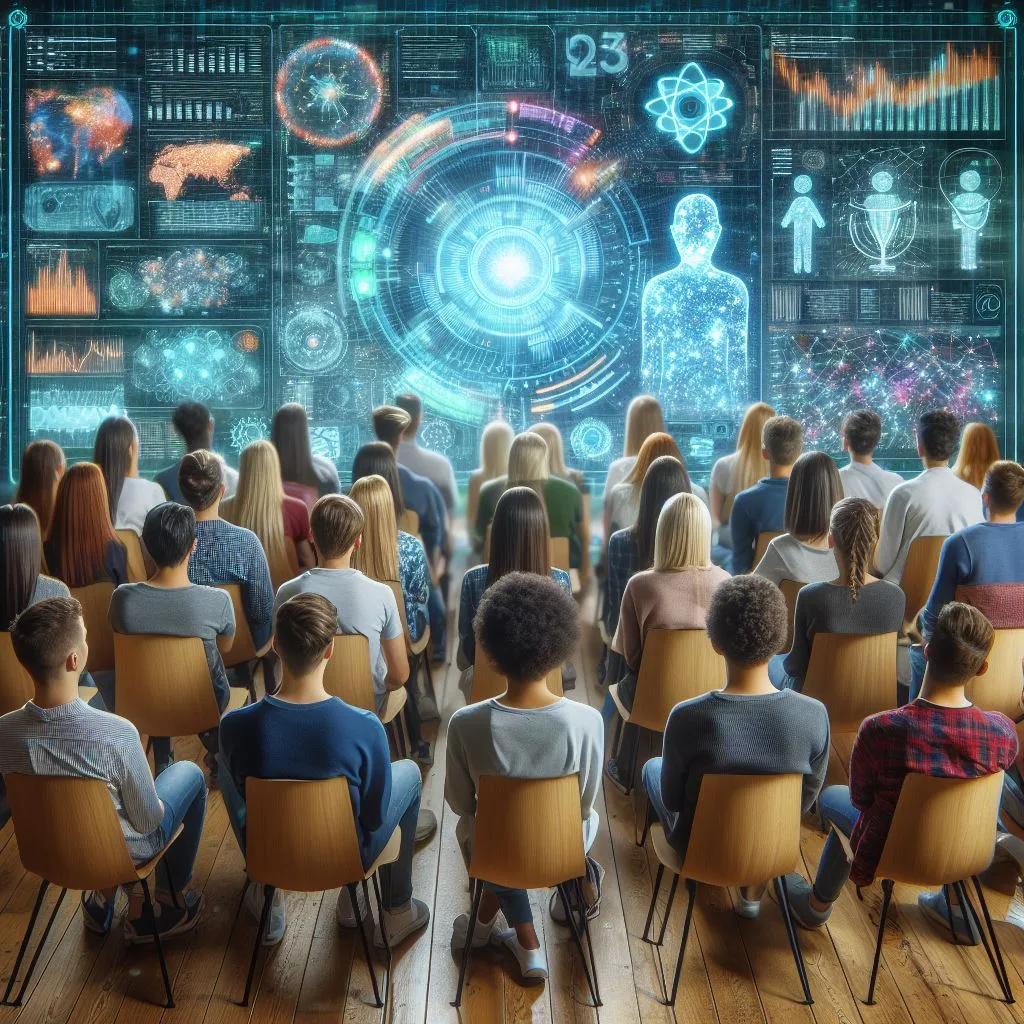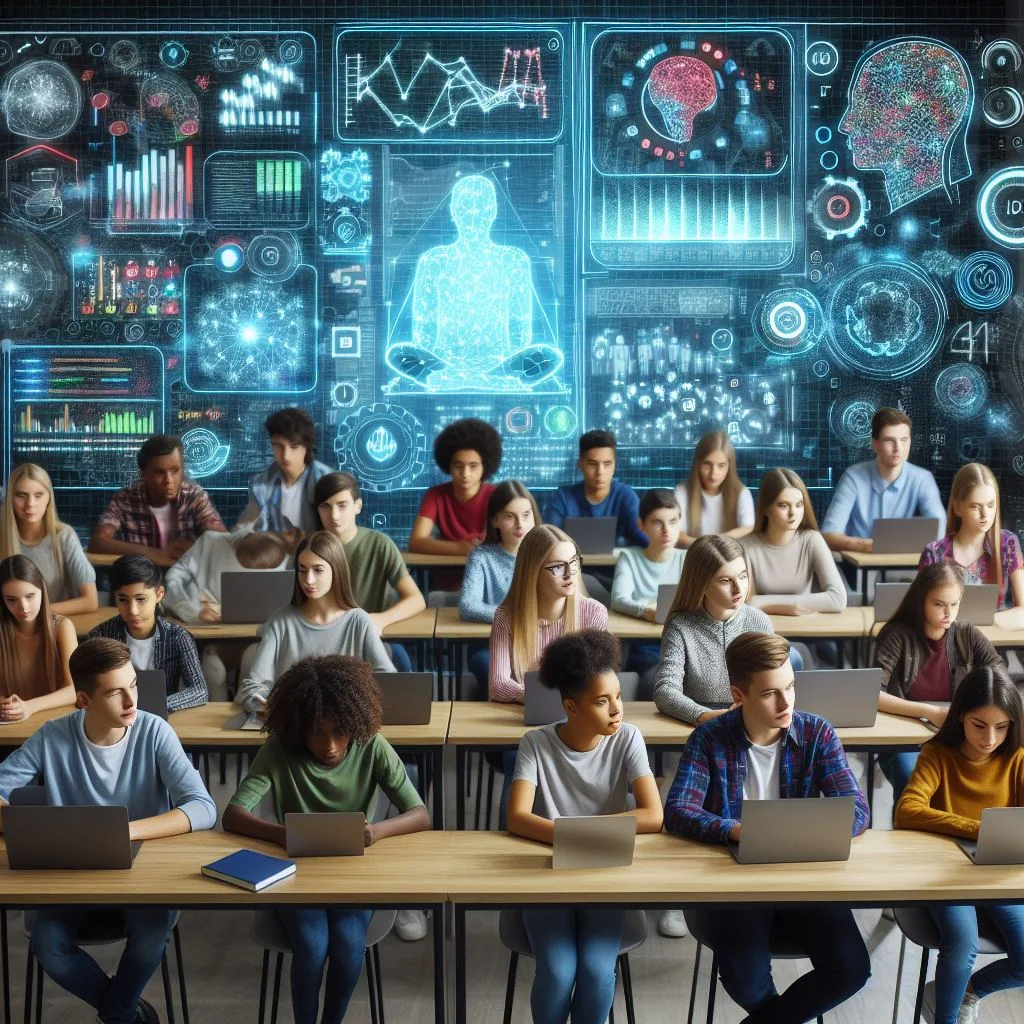Using machine learning technology in the field of education is not just a recent phenomenon associated with the emergence of robots like ChatGPT; rather, its history extends back several years. Many educational tools and programs relying on machine learning have been developed, leading to significant transformations in teaching methods.
In this article, we will shed light on the benefits of using machine learning in education and provide some examples of educational applications that benefit from this technology.
How is machine learning used in the education sector and how does it affect the quality of education?
Machine learning is a branch of artificial intelligence used to develop algorithms and enable computers to learn from data and make decisions without human intervention. This process is continuous, allowing the system to continually improve its understanding and adapt to new information.
In the field of education, the term "machine learning in education" refers to the use of machine learning algorithms to enhance the teaching and learning experience. This approach leverages data related to student performance and learning patterns to improve teaching methods and student engagement.
What is machine learning and how is it applied in education?
These algorithms heavily rely on analyzing diverse data, whether texts, images, or numbers. After processing this data, the algorithm analyzes patterns and relationships within it. Thanks to learning from vast amounts of data, the algorithm utilizes this knowledge to provide intelligent estimates related to new information.
In the educational context, these estimates help identify students' levels and support teachers in recognizing students who may struggle to understand educational materials and may be susceptible to academic decline. They also aid in improving teaching methods and selecting appropriate information to meet individual student needs.
When new data is added to the algorithm, it analyzes these new inputs, enhances its internal model, and strengthens its ability to extract patterns and relationships between the new and existing information. This continuous improvement enables the machine learning system to adapt to new information and increase its accuracy in predictions over time.
It should be understood that machine learning does not replace the role of teachers but serves as a supportive tool for them. It provides valuable data and insights to customize the teaching process for each student individually, enhancing the ability to develop educational plans tailored to the specific needs of students.
What are the benefits of machine learning in education?
1.Personal Learning
Personalized learning enhances the learning experience by customizing teaching methods and resources according to individual student needs. For example, artificial intelligence can assist students struggling to understand specific subjects like mathematics by providing tailored additional exercises targeting their specific weaknesses, enabling teachers to offer appropriate support.
2. Early intervention and support
Machine learning systems are capable of analyzing student data to identify those at risk of academic decline, enabling teachers to intervene early and provide appropriate support.
3. Improve efficiency
Machine learning can contribute to automating tasks that require a long time, allowing teachers more time to improve teaching methods and customize them better according to students' needs, ultimately enhancing the efficiency of education.
4. Enhance accessibility
Machine learning breaks language barriers by translating educational materials, thus making education accessible to a wider range of students. Additionally, numerous tools built on this technology have been developed, providing diverse teaching methods suitable for students from different backgrounds. Moreover, these tools can assist students with disabilities in better understanding educational materials.
5. Positive improvement based on data
Machine learning facilitates the process of collecting valuable data about students' performance and learning patterns, and also analyzes them. This data provides valuable insights for teachers into areas where curricula or teaching methods can be improved, thereby contributing to achieving overall enhanced educational outcomes.
What are the most prominent applications of machine learning in the education sector?
1. Automated Correction Systems
Automated grading systems offer the ability to digitally assess student responses and provide immediate feedback on adherence to rules, comprehension of the subject matter, and writing style. These systems utilize algorithms to differentiate between correct and incorrect answers, with the capability to evaluate elements such as rule adherence, sentence structure, and use of key words. Additionally, ClassPoint, an add-on for PowerPoint, provides teachers with the opportunity to create interactive tests based on machine learning to analyze student responses and furnish them with precise information regarding each student's performance.
2. Smart Content Recommendation Systems
Intelligent content recommendation systems rely on machine learning technology to understand students' behaviors and discover their interests. Based on this, they suggest tailored educational content that meets the individual needs of each student. For example, if a student frequently interacts with videos on a specific topic, the system will recommend more related videos and reading materials on that subject.
Among the prominent educational platforms that utilize this technology are:
These platforms enable students to access diverse and suitable educational materials according to their interests and educational levels, helping them enhance their understanding and improve their academic performance.
3.Interactive Test Creation Tools
Today, there are many tools available that utilize artificial intelligence and machine learning techniques to create automatic tests using input content or PowerPoint slides tailored for educational materials. These tools contribute to providing an interactive testing experience, allowing students to answer questions and engage with educational content in real-time.
Among these tools, standout examples include ClassPoint AI, which analyzes input content or presentation slides created by the instructor, identifies key points, and then generates test questions in various formats using its intelligent algorithms.
Furthermore, these tools offer multiple benefits such as tracking student responses instantly and analyzing answer methods, enabling teachers to assess students' understanding levels and enhance their teaching methods based on real-time data and analysis.
4. Speech recognition features to improve language learning experience
Language learning apps rely on machine learning algorithms to analyze users' personal pronunciation, enabling them to provide direct feedback and customized adjustments to improve pronunciation skills and enhance the learning experience. By comparing learners' pronunciation with recordings of native speakers, these algorithms allow the system to offer precise guidance for error correction and linguistic performance improvement. Among the popular apps that utilize this technology are Duolingo, Babbel, and Rosetta Stone. Teachers can encourage students to utilize these apps at home to effectively enhance their language skills.



